2D Shapes Teaching Resources
Bring dimension to 2D shapes for primary students with printable worksheets, digital activities, maths games and more — created by teachers for teachers!
This comprehensive collection of teaching resources includes editable lessons on two-dimensional shapes, aligned to the Australian curriculum and ready to be printed and used in the classroom. Explore the entire collection to find educational games, geometric activities, posters and vocabulary word wall cards to assist your students when they are learning to identify 2D figures by their names and their attributes.
Teaching this part of the maths curriculum for the first time in a while? Read on for a primer from the teachers on the Teach Starter team.
What Are 2D Shapes?
Two-dimensional shapes, or 2D shapes, are shapes that have only length and width, but no depth. Each of these geometric shapes has its own unique characteristics and properties, such as the number of sides, the types of angles and the relationship between the sides and angles.
For example, a square has four equal sides and four right angles, while a circle has no sides and no angles.
Teaching about 2D geometric shapes is crucial in those early years classrooms as these are the building blocks of more complex geometric concepts. Understanding them is an important foundation for developing spatial reasoning skills. It will also lay the groundwork for learning about symmetry, angles and perimeter and area, among other geometry and measurement concepts.
2D Shapes — A Kid-Friendly Definition
Looking to provide a simple definition for your primary students? Here's a kid-friendly definition you can use:
A 2D shape is a flat shape that has only two dimensions — length and width. When something is two-dimensional, it's flat like a drawing or a picture on a piece of paper.
Understanding 2D shapes is important because it helps us recognise and describe the shapes we see around us, and it can also help us with math and other subjects.
2D Shape Examples
A definition is a good start, but providing concrete examples will help students begin to wrap their heads around these two dimensional-objects!
Let's look at some of the common examples of 2D shapes that we teach in the early years:
Square
A square is a 2D shape with four straight sides that are all equal in length and four right angles. It is a type of rectangle and a type of parallelogram.
Rectangle
A rectangle is a 2-dimensional shape that has four straight sides. Unlike a square, a rectangle has two sides that are longer than the other two. It has four right angles and opposite sides that are parallel and equal in length.
Parallelogram
Like a rectangle and square, the parallelogram has four sides and is considered a 2D shape. The four straight sides of a parallelogram are parallel to each other. Opposite sides of a parallelogram are equal in length, and opposite angles are equal in measure. Squares, rectangles and rhombuses are all examples of parallelograms.
Trapezium
A trapezium (or trapezoid) is a quadrilateral shape with two parallel sides and two non-parallel sides. The parallel sides are called the bases of the trapezium, and the non-parallel sides are called the legs. Even though a trapezium has four sides, it is not a parallelogram!
Triangle
A triangle is a two-dimensional shape that has three straight sides and three angles. The angles of a triangle always add up to 180 degrees.
Circle
A circle is a 2D geometric shape that is round and has no straight sides. It is defined as the set of all points in a plane that are at a fixed distance (called the radius) from a single point (called the center).
Ellipse
An ellipse is a 2D shape that is similar to a circle, but its shape is stretched out or elongated. It is defined as the set of all points in a plane whose distances from two fixed points (called the foci) add up to a constant value.
Pentagon
A pentagon is a 2D shape that has five straight sides and five angles. The word 'pentagon' comes from the Greek words 'penta' (meaning 'five') and 'gonia' (meaning 'angle'). Each angle of a regular pentagon measures 108 degrees, and the sum of the angles in a pentagon is 540 degrees.
Hexagon
A hexagon is a 2D shape that has six straight sides and six angles. Each angle of a hexagon measures 120 degrees, and the sum of the angles in a hexagon is 720 degrees. Snowflakes are a common example of hexagons found in nature, and so is the honeycomb!
Rhombus
A rhombus is a 2D shape with four straight sides that are all equal in length. It is a type of parallelogram, and it has opposite angles that are equal in measure.
Octagon
An octagon is an eight-sided 2D shape. A stop sign is an octagon that students might recognise from seeing it along the road on the way to school.
Quadrilateral
A quadrilateral is a 2D shape with four sides and four angles. The sum of the interior angles of a quadrilateral is always 360 degrees. The following are all examples of quadrilaterals:
- Square
- Rectangle
- Parallelogram
- Trapezium
- Rhombus
What Are Polygons?
Many of the 2D shapes that students learn about are polygons.
A polygon is a 2D shape that has three or more straight sides and angles. Polygons can have any number of sides, but they must be straight, and they must not cross each other.
The word 'polygon' comes from the Greek words 'poly' (which means 'many') and 'gonia' (which means 'angle').
Here are some common examples of polygons:
- Triangles
- Squares
- Rectangles
- Pentagons
- Hexagons
- Octagons
A circle and an ellipse are both 2D shapes, but they are not polygons. They have a curved shape, while polygons consist of a closed structure with sides.
- Free Plan
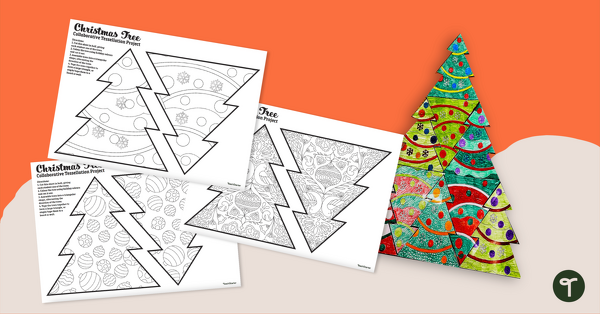
Tessellation Christmas Tree - Printable Project
Engage your students in the weeks before Christmas with a collaborative Christmas Tree Tessellation project.
- Plus Plan
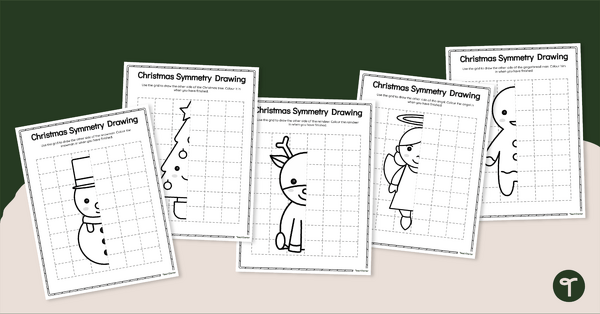
Christmas Symmetry Worksheets - Symmetry Drawing Activity
Explore symmetry with these Christmas symmetry worksheets.
- Plus Plan
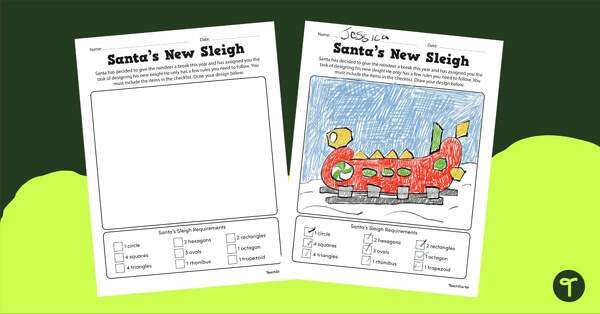
Santa's New Sleigh – Christmas 2D Shapes Worksheet
Design Santa a new sleigh using 2D Shapes with a fun Christmas maths worksheet.
- Plus Plan
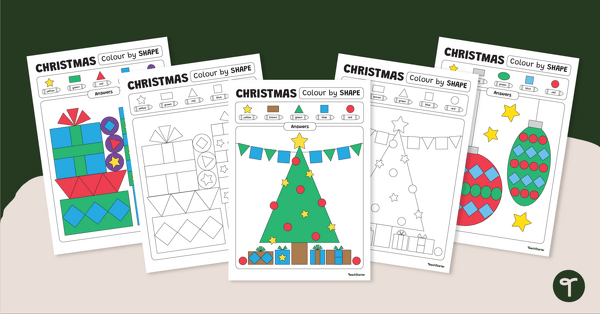
Colour By Shape Christmas Worksheets
Use knowledge of 2D shapes to colour in these Christmas-themed colour by shape worksheets.
- Plus Plan
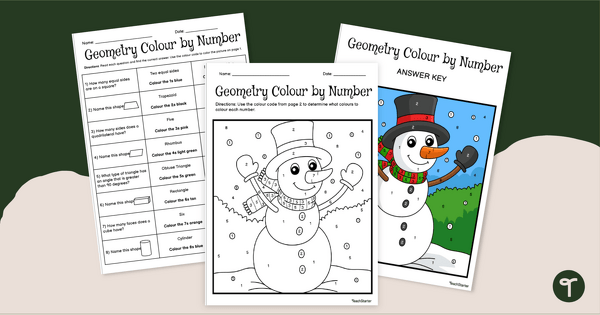
Christmas Colouring By Number - 2D and 3D Shapes Worksheet
Practise classifying 2D and 3D shapes with a printable Christmas colouring-by-number worksheet.
- Plus Plan
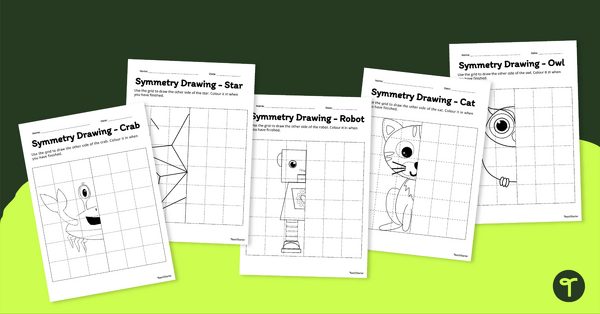
Symmetry Drawing Worksheet Pack
Teach your students about symmetry using this series of drawing worksheets where they must copy an image symmetrically using grid lines for reference.
- Plus Plan
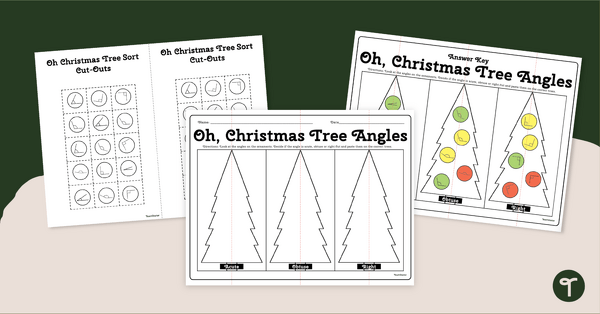
Christmas Angles Worksheets
Identify acute, obtuse, and right angles with a Christmas Angle Worksheet for Year 4.
- Plus Plan
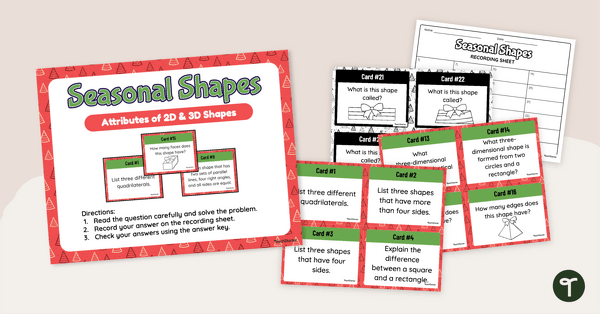
Christmas Maths - Properties of Shapes Task Cards
Combine Christmas and maths with these 2D and 3D Shape Christmas Maths Activity Task Cards for Year 4.
- Plus Plan
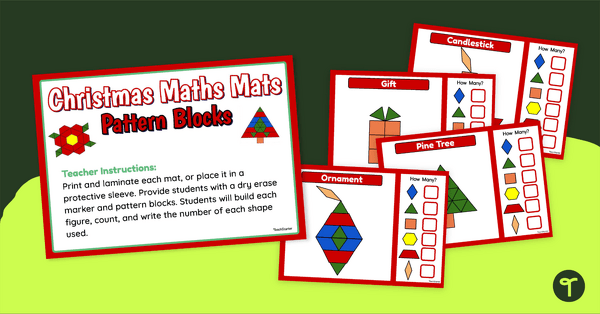
Christmas Maths Learning Centre - Pattern Block Picture Cards
Print a set of Christmas pattern block pictures to help children develop shape recognition and fine motor skills.
- Plus Plan
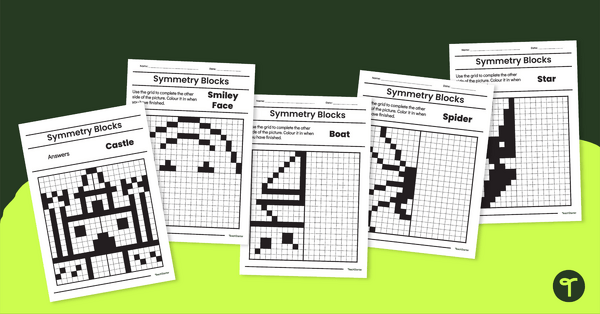
Symmetry Worksheets
Use this set of eight symmetry worksheets to help students understand symmetry, the line of symmetry, and symmetrical objects.
- Plus Plan
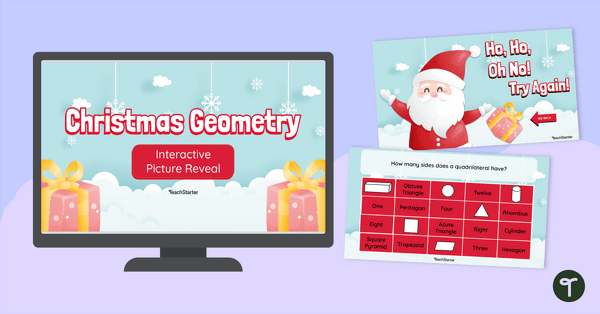
Year 4 Geometry Christmas Game- Classifying Shapes
Identify 2D and 3D shapes and their attributes with an exciting Christmas Geometry Game!
- Plus Plan

Measuring and Estimating Angles Worksheet Set
Assign our measuring and estimating angles worksheet set to your students for tiered practice with a variety of angle types.
- Free Plan
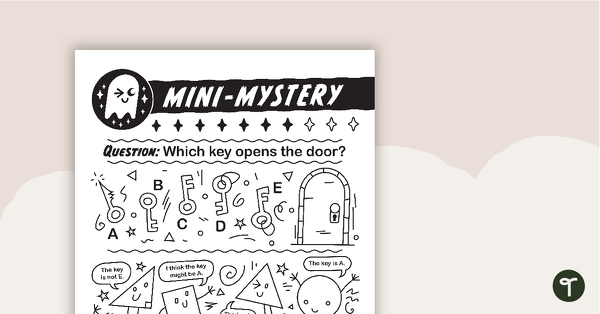
Mini-Mystery – Which Key Opens the Door?
Use knowledge of 2-D shapes and right angles to solve the mystery in this fun, logic-based activity.
- Plus Plan
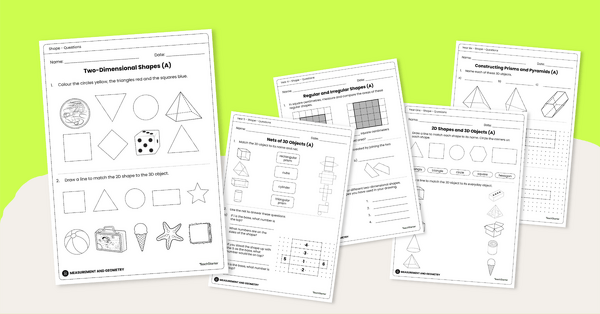
Shape Worksheet Sets (Foundation to Grade 6 Level)
Use these levelled worksheets sets with your primary school students to explore 2D shapes and 3D objects!
- Free Plan
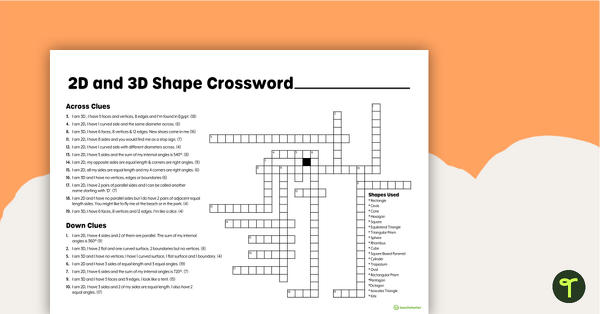
2D Shapes and 3D Objects Crossword with Solution
A crossword with clues for both 2D shapes and 3D objects.
- Plus Plan
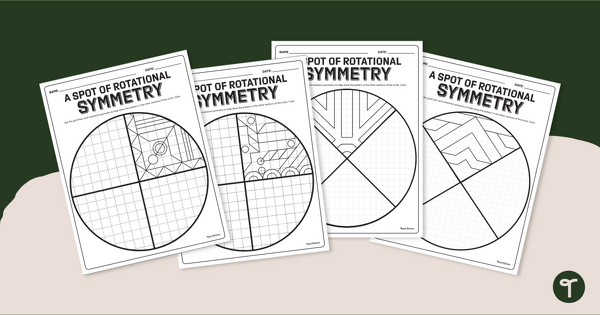
Exploring Rotational Symmetry Worksheets - Drawing Prompts
Encourage creativity and practice knowledge of rotational symmetry with a set of exciting symmetry drawing worksheets.
- Plus Plan
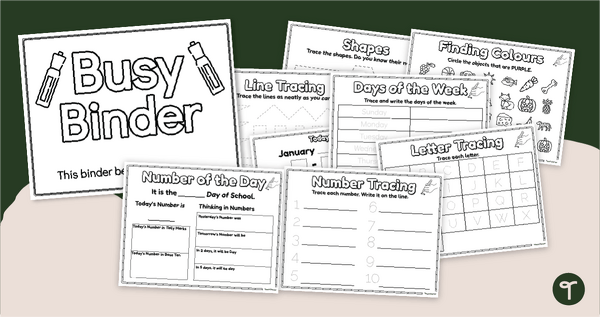
Busy Binder - Morning Work Pages for Kindergarten
Review daily calendar, maths, literacy, and fine motor skills with a printable morning work pages for kindergarten!
- Plus Plan
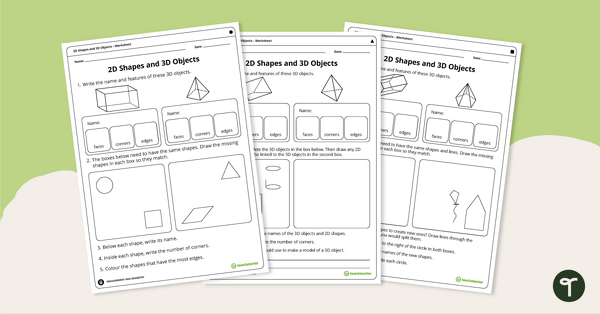
2D Shapes and 3D Objects – Worksheets
Focus on drawing 2D shapes and describing 3D objects with this set of differentiated worksheets.
- Plus Plan

Draw The Line of Symmetry Worksheets
Use this lines of symmetry worksheet to help students practise drawing lines of symmetry on 2D shapes.
- Plus Plan
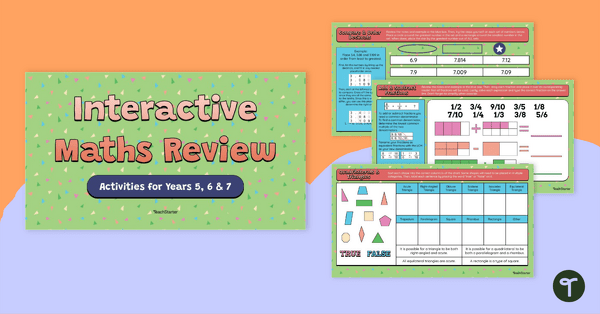
Interactive Maths Review – Activities for Years 5, 6 and 7
Review important maths concepts covered in years 5, 6 and 7 with a student-led interactive activity.
- Plus Plan
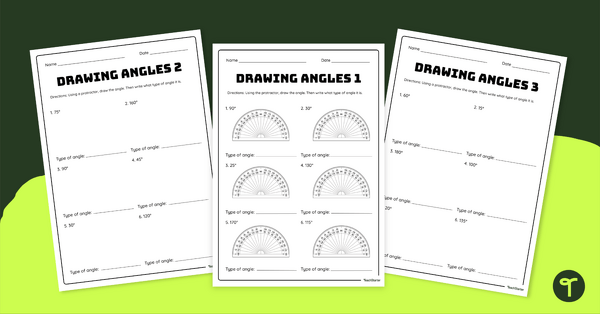
Drawing Angles Activity Sheet Set
Use our drawing angles activity sheet set to give students differentiated practice in classifying and constructing angles.
- Plus Plan
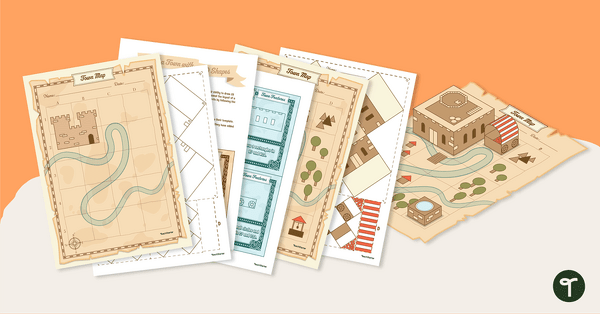
Ye Olde Geometry Town Project
Build a charming medieval village in our Ye Olde Geometry Town project, designed to give your students engaging hands-on practice with multiple geometry standards.
- Plus Plan
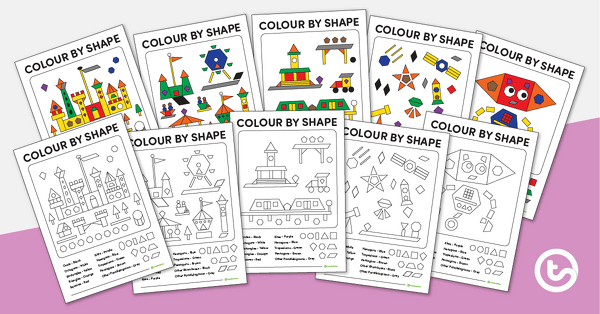
Colour by 2D Shape (Basic and Complex Shapes)
A detailed set of colour by shape activities.
- Plus Plan
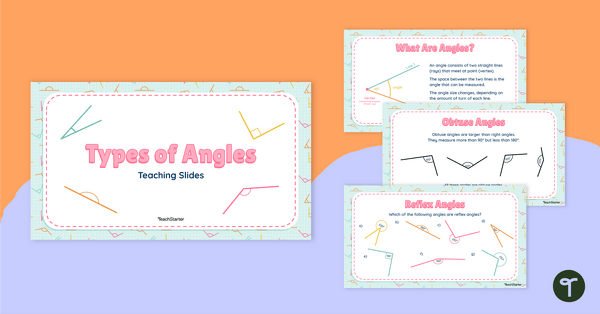
Types of Angles Teaching Slides
Teach your students about the six main angle types with this teaching presentation perfect for primary school maths lessons.
- Plus Plan
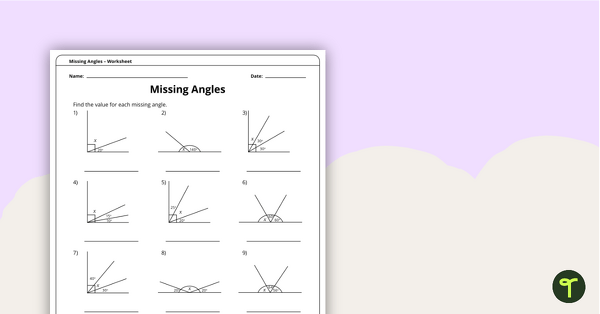
Missing Angles – Year 6 Maths Worksheet
Download this missing angles worksheet to get your students calculating missing angles on right and straight angles.
- Plus Plan
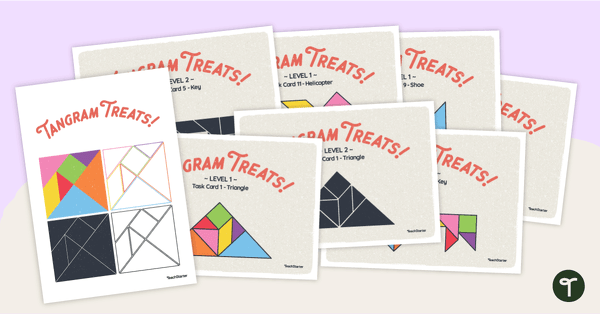
Tangram Treats – Task Cards and Templates
Explore the properties of geometric shapes with this set of scaffolded tangram shapes task cards and cut-out tangram templates.
- Plus Plan
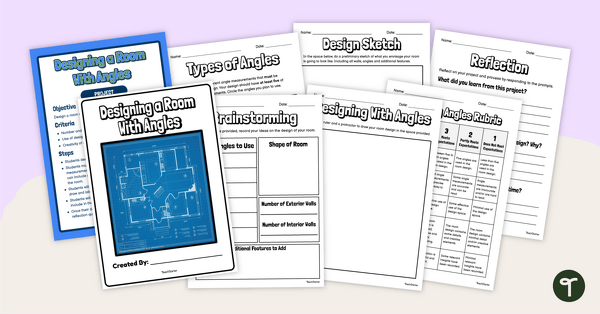
Angles Maths Investigation – Design a Room
Turn your students into interior designers with this inquiry-based maths project based on drawing and measuring angles.
- Plus Plan
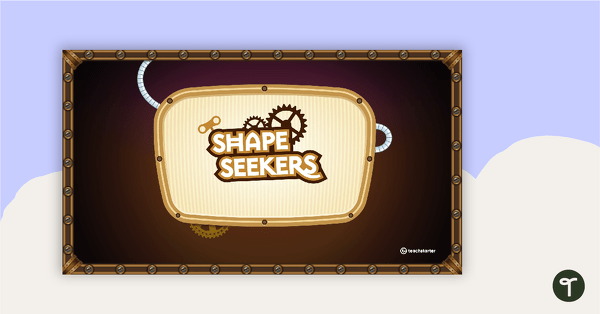
Shape Seekers PowerPoint
An interactive 162-slide PowerPoint that follows the story of a professor and their new invention that turns 2D shapes into 3D objects.
- Plus Plan
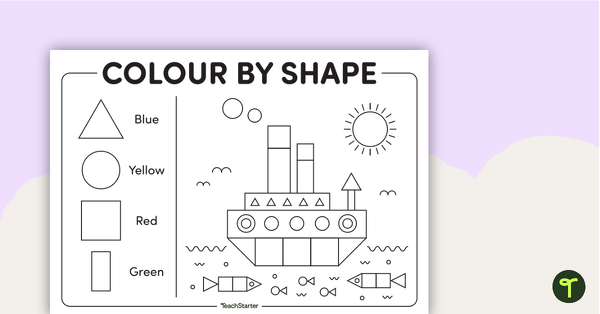
Colour by 2D Shape (Basic Shapes)
A set of five colour by shape worksheets.
- Free Plan
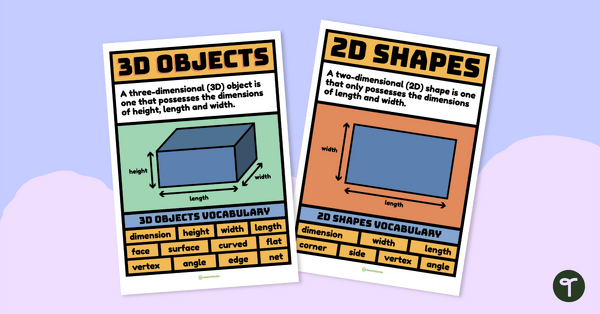
2D Shapes and 3D Objects Vocabulary Poster
A poster that explains 2D and 3D shapes and lists associated vocabulary.
- Plus Plan
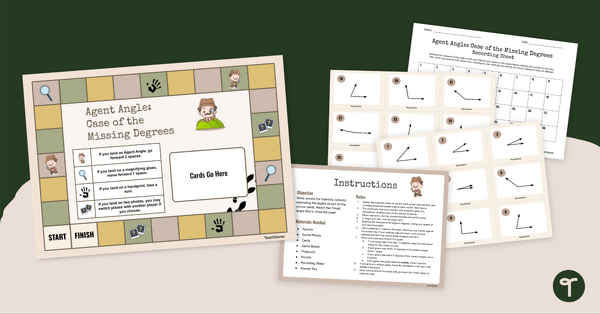
Guess the Angle Board Game - The Case of the Missing Degrees
Engage your students with our 'Guess the Angle' board game that will have them estimating and measuring angles as they make their way to the finish.
- Plus Plan
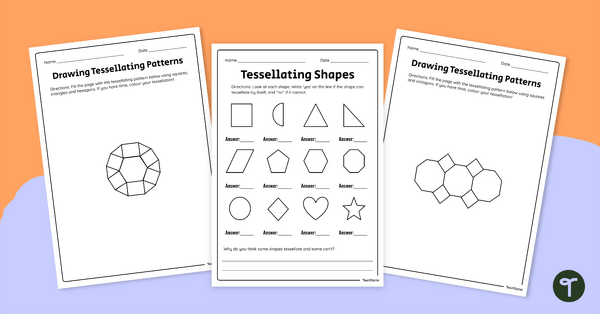
Tessellating Shapes Worksheet Set
Download this tessellating shapes worksheet set to introduce your students to the beauty of tesselations.
- 2D Shapes Worksheets
- 2D Shapes Games
- 2D Shapes Posters
- 2D Shapes Teaching Presentations
- 2D Shapes Templates
- 2D Shapes for Preschool/Kindergarten
- 2D Shapes for Foundation Year
- 2D Shapes for Year 1
- 2D Shapes for Year 2
- 2D Shapes for Year 3
- 2D Shapes for Year 4
- 2D Shapes for Year 5
- 2D Shapes for Year 6
- 2D Shapes for Year 7